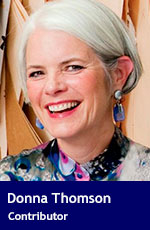 Talking about caregiving at work can be difficult and stressful. And that’s important because 35 per cent of all employed Canadians have caring responsibilities at home.
Talking about caregiving at work can be difficult and stressful. And that’s important because 35 per cent of all employed Canadians have caring responsibilities at home.
Dr. Zachary White is an expert in the barriers that natural caregivers face in explaining their responsibilities at home to others, including employers. White is an associate professor at Queens University in Charlotte, N.C., who has recently made working caregivers the subject of his research.
White also blogs regularly about the meaning, stress and uncertainty of daily caring at The Unprepared Caregiver and he is a senior adviser at the Canadian caregiver support forum Huddol.
Here’s part of a conversation we had with White.
Troy Media: What are the biggest barriers to communicating about caregiving in the workplace?
White: In the inevitable blurring of work and home life, caregivers must constantly negotiate the possible rewards of receiving peer support at work while also attempting to make good judgments about how and with whom to share their personal experiences.
On the one hand, caregivers want to openly express what’s going on in their lives at home. On the other hand, caregivers also understand the possible risks of disclosing their caregiver experiences in the workplace. For example, with whom should they share their experiences? Who do they not want to know? How might colleagues view them after their disclosures? Will colleagues feel like care responsibilities will take away from productivity and thus increase others’ workloads? How often should natural caregivers share their care challenges, and in what format (e.g., in person, telephone, email, text)?
Troy Media: Has your research shown how we should communicate care responsibilities at work?
White: There’s no handbook for what should be said because each situation and employee concerns are different. However, if an employee chooses to share his or her caregiver experiences at work, they might benefit from the ability to control their narrative. Instead of having to respond to a question that might arouse defensiveness (“What’s wrong with you – you don’t seem to be performing like you normally do?”), proactively sharing caregiver experiences in the workplace might allow a caregiver to provide vital context, which might lead to greater employer understanding.
A willingness and ability to frame one’s caregiver experiences as an ongoing journey, for example, might redirect the mystery of “What’s going on?” with the caregiver/employee to “How can I help to ease the pressures in my employee’s life?”
Explaining how you’re trying to integrate your care responsibilities into your work responsibilities might also reduce uncertainty amongst peers in the workplace.
An employee need not have all of the answers here, but merely initiating this conversation might encourage collective sense making and problem solving.
Additionally, a one-time disclosure will usually not suffice because most caregiver experiences are chronic.
Finally, a caregiver should be prepared to think about what types of channels might be best to communicate their experiences to others. Face-to-face disclosures might be best for the initial disclosures of context, but email typically is the preferred medium employees use to disclose about their caregiver experiences because it allows for greater control and flexibility over the message. However, not all workplaces (nor employees) are the same, so I would suggest thinking about which media you might prefer to use to communicate given your situation and the specific culture of the workplace.
Without a language to explain our experiences to others in the workplace, natural caregiving will remain mysterious and stigmatized, negatively affecting our empowerment and resilience.
Developing a language that meaningfully resonates with our experiences is an essential step toward creating and leveraging social support, connecting to others and explaining care experiences in ways that peers at work will understand.
The views, opinions and positions expressed by columnists and contributors are the author’s alone. They do not inherently or expressly reflect the views, opinions and/or positions of our publication.

